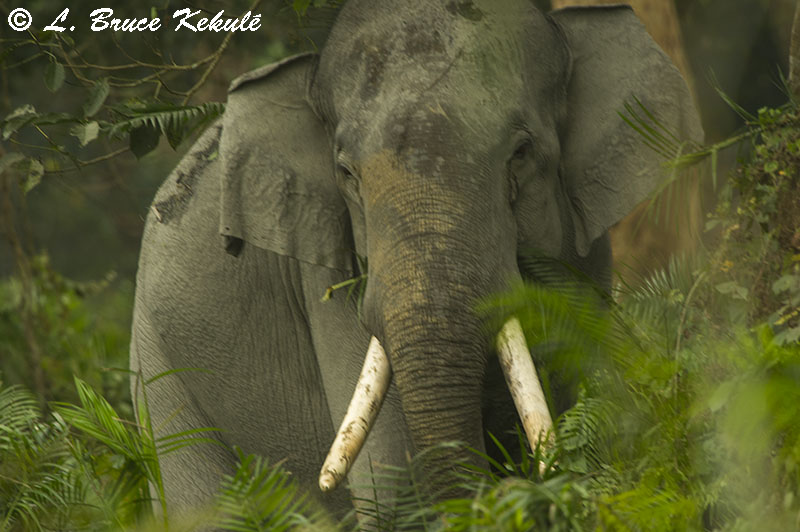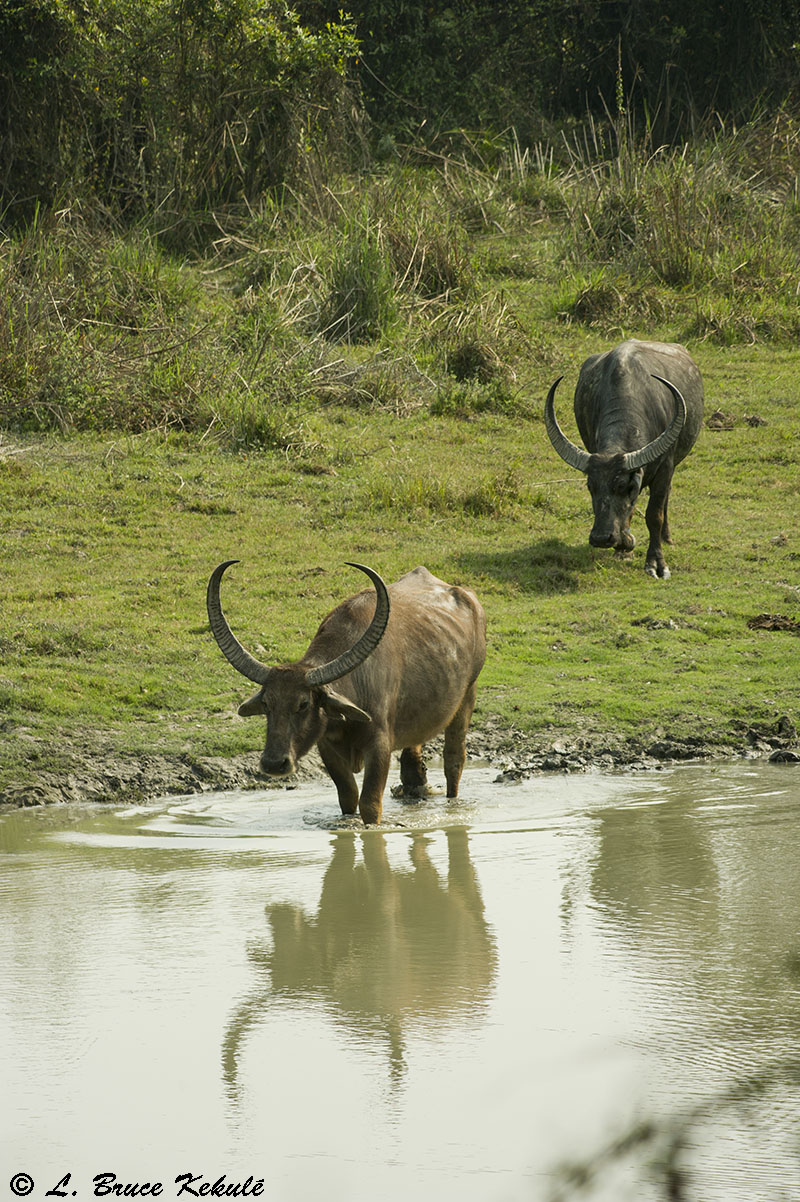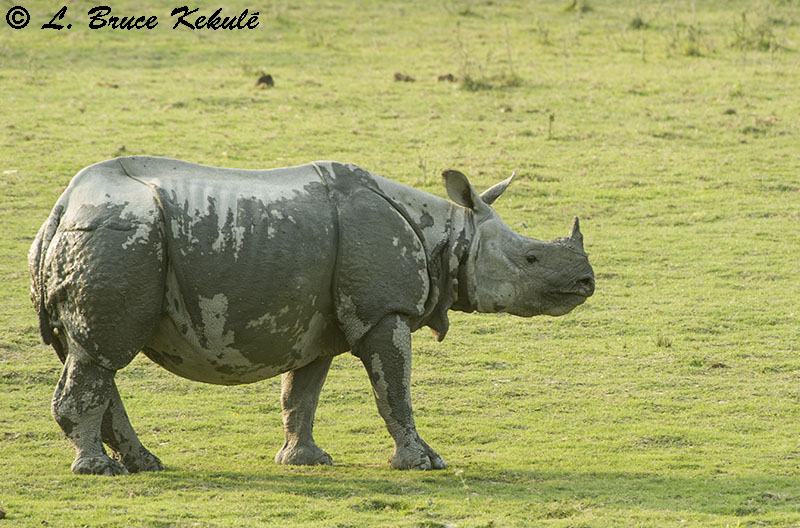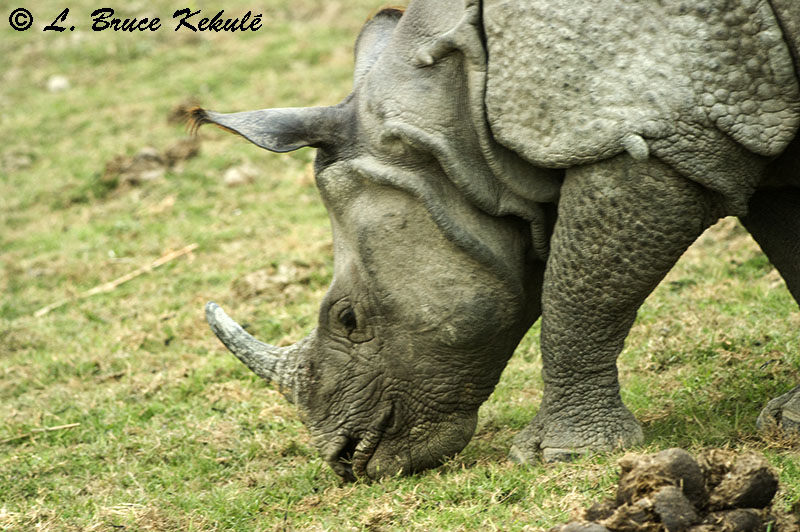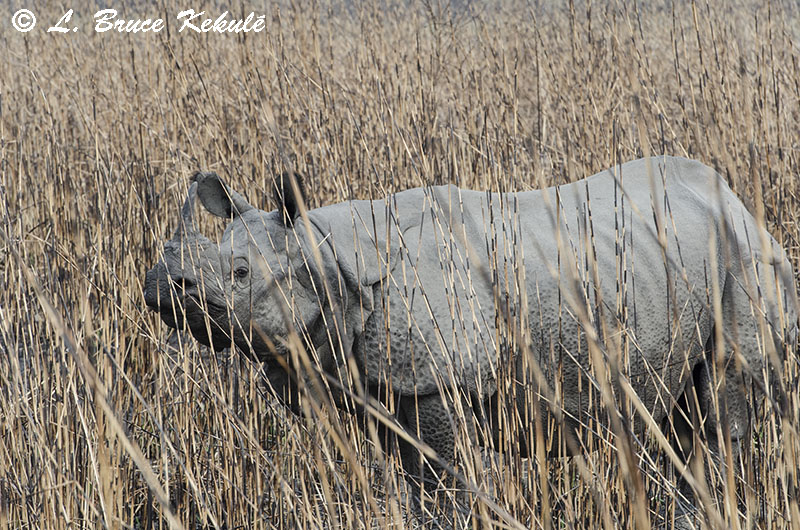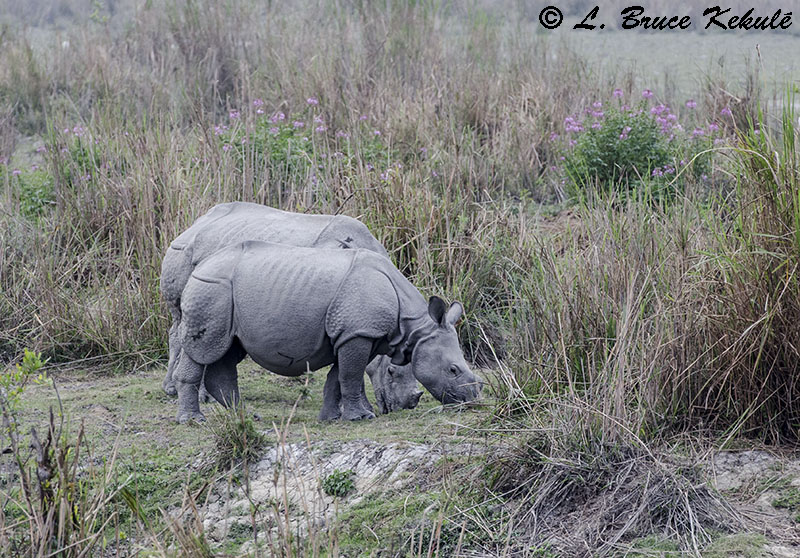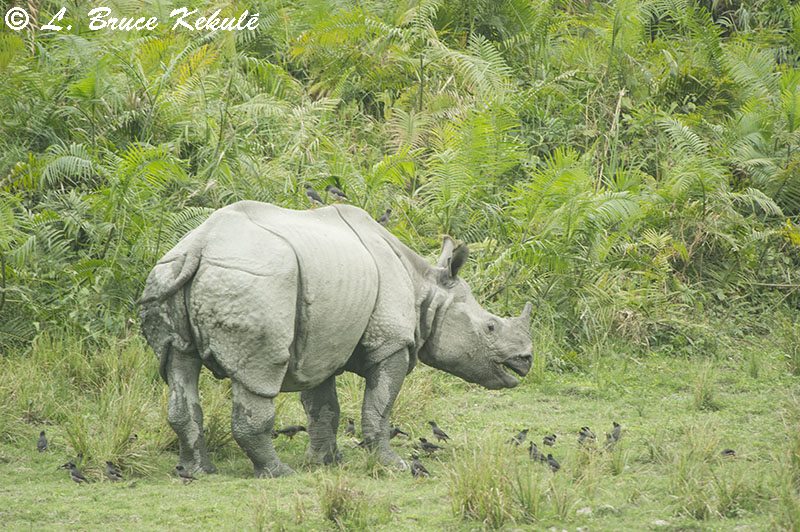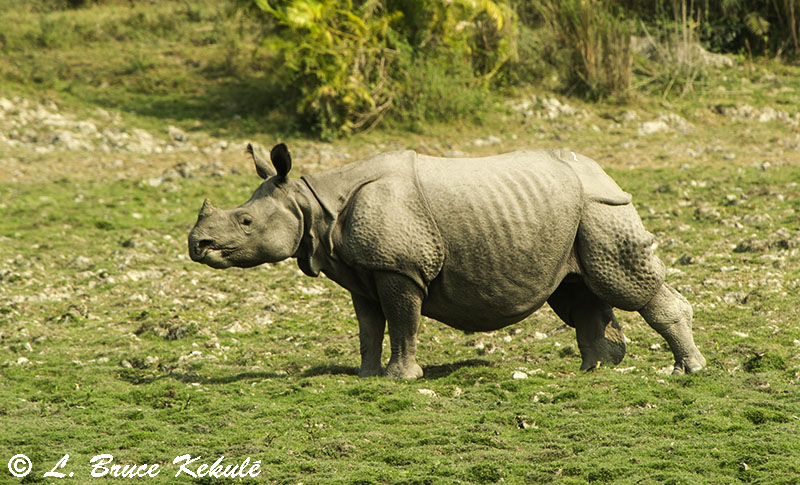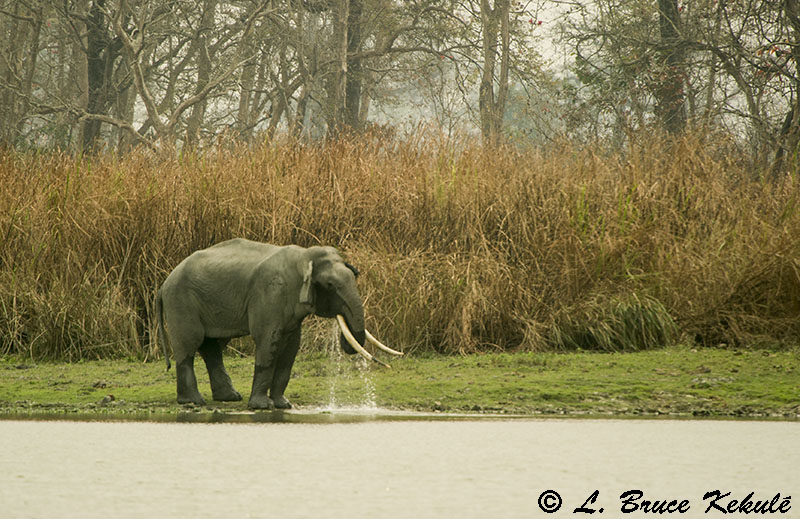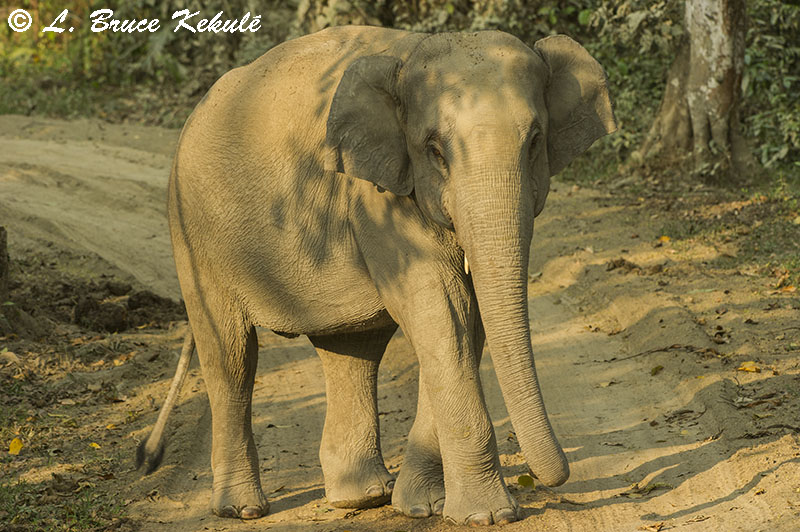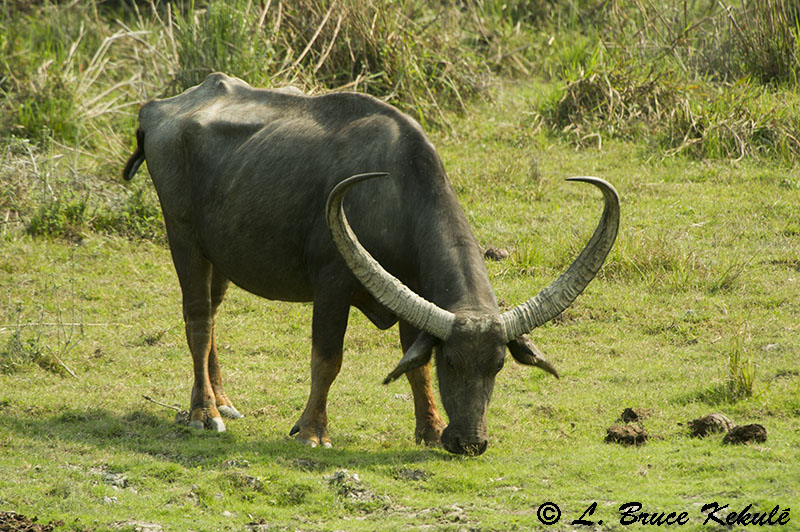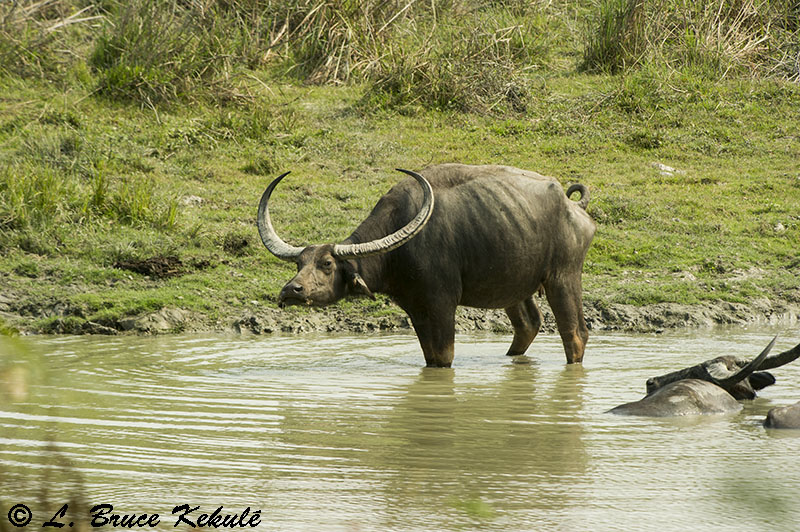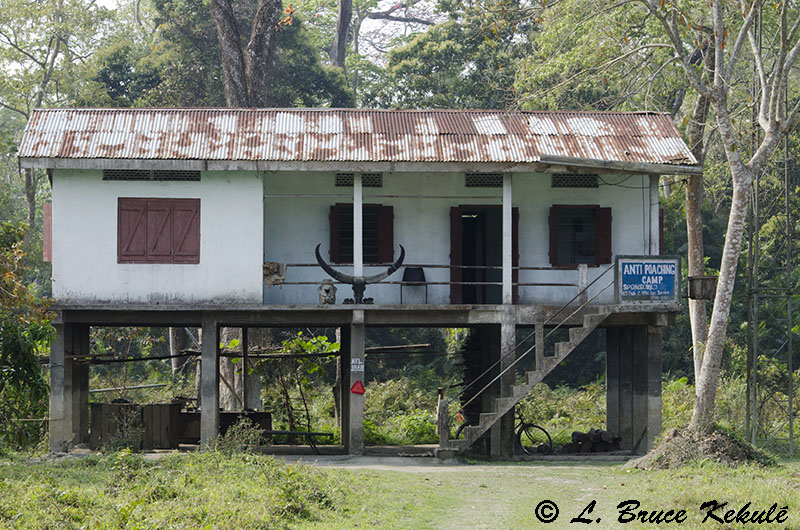Kaziranga National Park and Tiger Reserve: The greatest protected area in the world
From a dozen great one-horned rhinos to over 2,400 individuals in just 80 years…!
Kaziranga, a UNESCO World Heritage Site is situated in the State of Assam in northeast India, and encompasses some 430 square kilometers of grasslands, wetlands and river habitat plus a buffer zone amounting to another 400 square kilometers. Over time, the Assamese have created the greatest protected area in the world.
A close-up of a rhino bull and a mynah birds looking for insects at sunset. There are
some 2,400 rhinos in Kaziranga making this place absolutely amazing in regards to
these creatures still thriving in the wild, and where one can actually see them.
A big tusker with nice ivory. There are some 1,000 elephants in the park and they
have also flourished because of the pristine habitat, food sources and great protection.
But they are also targeted by poachers but on a much lesser scale. It’s easy to see
them in all areas of Kaziranga as they go about their daily lives.
A pair of wild water buffalo cows at a waterhole. Along with the rhino and elephants,
these bovid have increased to 1,300 individuals. The Indian sub-species have the largest
horns of any creature in the world, and Kaziranga has the highest density of buffalo.
In most places, the African and Asian rhinos are in trouble and close to extinction, especially the Javan and Sumatran species. Rhinocerotidae have been on earth since the ‘Late Eocene or Early Oligocene’ (about 33 to 28.3 million years ago). Being odd-toed ungulates and herbivorous, they thrive in these grassland and wetlands that are supplied nutrients from the annual floods from the great Brahmaputra River.
This river flows from the Himalayas through the park in the northern section. This waterway is one of India’s main lifelines providing water to millions of people downstream along its entire length all the way to Bangladesh emptying into the Bay of Bengal. Annual floods bring nutrients to the land and the ecosystem is replenished.
Originally established as a reserve forest in 1908, Kaziranga was declared a sanctuary in 1916 to counter extensive poaching of the rhinoceros. In 1974, the Indian Government demarcated the present area as a national park. Then, in 2007, it was declared a tiger reserve under the Central Government’s ‘Project Tiger’ scheme.
Rhino gallery: Over four days, I photographed loads of these prehistoric looking
creatures in all three zones (West, Central and East)…! It was simply amazing…!
Eighty years ago, the rhino population was decimated to just a dozen or so beasts by poaching for their horn in demand by the Chinese and Vietnamese. The Assamese government decided to really put its foot down and instigated a policy to eradicate poachers using ‘extreme measures’ throughout the park, plus increasing the ranger force by several hundred percent.
The animal population immediately began to pick-up, and the last senses in 2014 estimated that some 2,400 rhino, 1,300 wild water buffalo and 1,000 elephant are thriving in this small park. Along with this, there are over 100 tigers that live here too and the park has one of the highest densities of the striped cat per square kilometer in the world. As a destination to see these majestic and iconic creatures, Kaziranga is the place to go.
Wild elephant gallery: I saw these herbivores every day and in all zones. There are over
1,000 of these giants in the park…!
The Assamese people are very proud of their heritage and the park is a ‘case study’ on how to actually save a species from extinction. All the large mammals propagate in safety and show the world; if you look after a place with a mandate to rid the protected area of poachers, animals will flourish. However, it turned into a small war and many people were actually killed including some rangers.
Even so in 2014, about 50 rhinos lost their horns and poachers killed three tigers. The battle continues and the government has done a brilliant job of saving nature with a tough mandate of ‘shoot to kill’ in order to protect this place.
It has worked so well that it is now possible to see rhino everyday, and just about everywhere, even outside the park. As I was leaving for the airport after four days on a recent safari in Feb. 2015, there were some cars parked by the side of the road and photographers had their cameras out taking images of a rhino a hundred meters from the tarmac.
Wild water buffalo gallery: There are more than 1,300 of these bovid and I saw them
everyday in all zones…! They have the largest horns in the animal kingdom….!
There are three zones (West, Central and East) that tourists are allowed to enter and it is scheduled by the lodge where you are staying on what areas one can visit. The Big Three (rhino, buffalo and elephants) can be seen in all areas. If you are lucky, a tiger may appear at any time. There are many bird species thriving and it is a bird watcher’s paradise.
The Park is home to more than 70 percent of the one-horned rhinoceros left in the world and harbors more than 60 percent of India’s wild water buffalo population along with the only population of Eastern swamp deer (or barasinga). Other important wildlife found are: gaur, leopard, fishing cat, large and small Indian civet, sambar, barking deer, hog deer, hog badger, Hoolock gibbon, capped langur, Assamese macaque, rhesus macaque, sloth bear, Gangetic dolphin and otter, etc.
A fresh tiger pug mark on the road in Kaziranga. I did not see a tiger here but got
a wonderful shot of a running tiger in the grassland of Corbett National Park
in northern India….!
From New Delhi, the flight to Guwhati in Assam takes about two hours and then it’s another four hours by taxi to the Infinity Lodge where I stayed situated close to the three Kaziranga park gates. There are many other hotels and lodges and one can find these on the Internet. There is also a bus service that passes the park. Traffic to the park is a bit hectic at certain times since it’s the main road in the northeast India to the next state of Nagaland, and on into Myanmar. It has been said that smugglers use this route for tiger bones and rhino horn to China.
Some of the rare birds thriving in Kaziranga: A female black stork identified by a
yellow iris near a waterhole; a Kalij pheasant in the forest; two bar-headed geese
in the wetlands, and a grey heron and pelican swimming in a pond….!
One thing for sure: the Forest Department here in Assam is one tough cookie. They have increased rangers to 700 men and women, and have 162 guard posts with 3-4 rangers living in each of these quarters. They do mainly foot patrols and are always armed with a least a rifle (mainly British .303s but some men have newer generation .315 Indian rifles that is lighter in weight than the old cumbersome English service arm) or sometimes 12 gauge shotguns. Some of the elite forest guards have assault rifles. While on any safari in Kaziranga, a forest guard with a rifle is mandatory in case of an emergency. The men do mostly foot patrols around their respective areas.
Kaziranga gallery: The park has seen some serious flooding and the most extreme levels
have been recorded shown here at a ranger station. Travel and viewing wildlife is normally
done in Maruti (Suzuki) type jeeps. Controlled burning of the grasslands carried out by the
Forest Department benefits the herbivores when new grass sprouts up….!
Needless to say, it is perfectly safe to travel in and around the park. An armed forest guard to ride ‘shotgun’ is mandatory and is picked up at the gate. For the most part, you’ll be able to see these beasts in a Maruti (Suzuki) safari type jeep called a ‘gypsy’. It is the best way to view wildlife and there are many operators at most of the lodges. The forest department also offers guided tours on an elephant-back to get up-close to the big beasts.
The best time to visit Kaziranga is from November to April. I used a Company named ‘Wilderness Uncut’ (wildernessuncut.com) for all my arrangements. Wildlife photographers Anu Marwah from New Delhi, and Jason Fernandes from Mumbai are co-owners and they organized everything to perfection. Their service is top-notch and I know who will arrange any future trips to India for me. Being wildlife photographers, they know what is needed for a successful trip.
That’s me with my naturalist Polash Borah, driver Mohammed Nekib Ali and a forest
ranger at a rest stop station early one morning during my recent safari.
I also had the pleasure of working with Polash Borah, my naturalist (17 years of experience in Kaziranga) and Mohammed Nekib Ali (10 years experience) my driver who also acts as a naturalist. We spent four days together and had a great time. They know exactly what are the best areas for viewing and photographing wildlife, and both work at the Infinity Lodge just outside the park.
May 1st is ‘World Rhino Day’ in India, and Kaziranga National Park and Tiger Reserve is the best place in the world to see these rare creatures up-close. If you are planning on visiting a protected area first hand and want to view Mother Nature’s giants, make arrangements to Assam; you won’t be disappointed…!
Travel Info:
From Thailand, one of the best airlines to travel to India is ‘Air India’ that has a daily flight leaving Bangkok around 8am and arriving in New Delhi at noon. Arriving in the daytime in Delhi is much better and safer than arriving after midnight like some of the other airlines do. A connecting flight on Indigo Airways to Guwhati in Assam is very good and takes about two hours. They are a budget airline and have several flights a day. I recommend these two carriers as being very reliable and reasonable in price. Give yourself at least three hours through the New Delhi domestic airport, as it is extremely busy and crowded. Finally, when flying a domestic airline, a maximum of 15 kilos for check-in baggage is the standard. Anything over that weight will be charged as excess.



